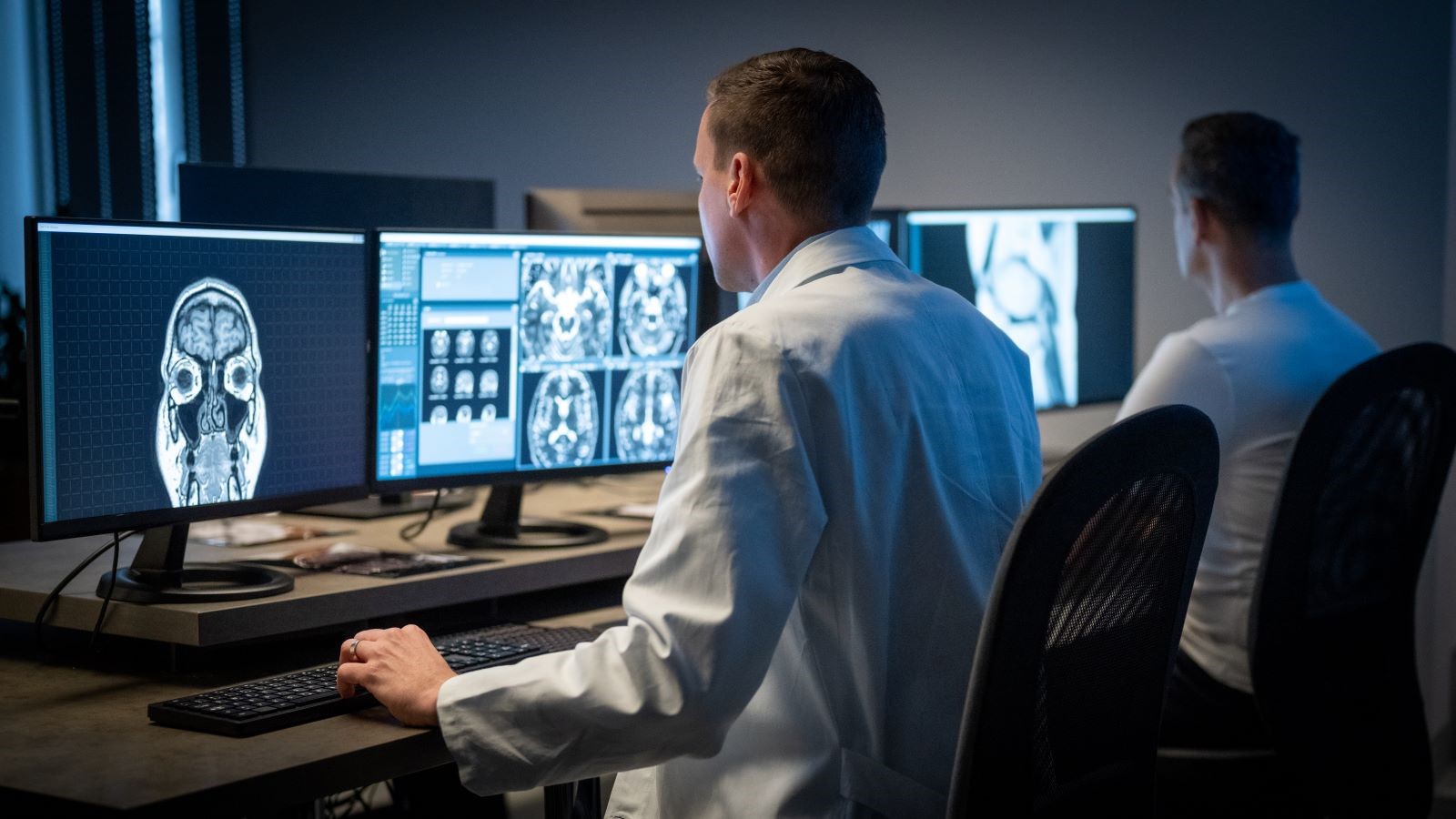<< Back
Recognizing the Warning Signs of a Brain Tumor

May 18, 2022
May is National Brain Tumor Awareness Month, and it’s estimated that nearly 90,000 people in the United States will be diagnosed with a brain tumor in 2022.

“Hearing the words ‘brain tumor’ is understandably frightening, but not all brain tumors are necessarily life threatening,” said Nazer Qureshi, MD, neurosurgeon with the Ayer Neuroscience Institute at The Hospital of Central Connecticut.
Dr. Qureshi says there are two types of brain tumors. First, those that are benign, which means non-cancerous. “These types of tumors are sometimes in the brain for a long time and grow very slowly,” said Qureshi. There are also malignant brain tumors, which are considered cancerous and can have two different causes.
“A primary brain tumor is a tumor that forms in the brain, but we also see metastatic brain tumors, which means a cancer spread from another part of the body to the brain.”
Symptoms of a brain tumor will vary depending on the location of the tumor and its size, but one symptom that remains constant among many patients is persistent headaches. However, not all people experiencing headaches should be worried that they have a brain tumor – headaches associated with a tumor often present differently.
“It’s normal for many of us to develop a headache as we go throughout our day because of stress, or other factors. But someone who notices they keep waking up with headaches in the morning, after you should be refreshed from sleeping, should pay attention to that and talk to their doctor,” Qureshi explains. He adds that if young children are complaining of headaches, that, too, should be taken seriously. Some of the other symptoms that could be associated with a brain tumor include:
- Seizures, especially in adults without underlying health issues.
- Vision changes.
- Difficulty speaking or thinking.
- Loss of balance or dizziness.
- Personality or behavioral changes.
Dr. Qureshi says that one option after a brain tumor diagnosis is surgery to remove the tumor, whether it’s benign or malignant. “There are certain parts of the brain that contain prime real estate, because they control our ability to do things, such as walk and talk. The goal is to try to remove the tumor, but sometimes it may be difficult because of where it’s located or because it’s deeply rooted – making it more complex,” said Qureshi. Depending on the diagnosis and outcome of surgery, radiation or chemotherapy are also treatment options to help reduce the size of a tumor.
While some of the symptoms of a brain tumor can be related to other health concerns, Dr. Qureshi encourages people to see a doctor so they can run tests and scans to see what’s going on and make a diagnosis.
“If a tumor is malignant, we have to address it as soon as possible because the sooner you go through treatment, the better your prognosis will hopefully be,” Qureshi says.